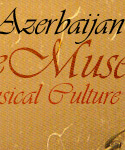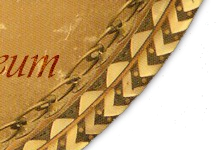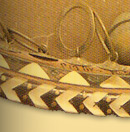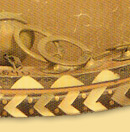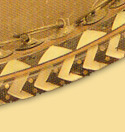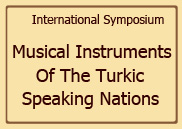Ney

Listen

|
The ney is one of the most ancient musical instruments. Various types of neys
were widespread among the peoples of the Middle East and other countries. There
were several types of neys in Azerbaijan.
Fuzuli described the ney’s sound as plaintive:
Because of love, I always moan like a ney
I won’t stop moaning even
If
I am cut into pieces like a ney.
The great scientist and musicologist Abdulgadir Maraghayi (14th-15th
centuries) wrote in his work “Magasid al-Alhan” about two types of ney—the agh
ney (white ney) and the gara ney (black ney), which were widespread in those
times. The fine-timbred ney used to be a wonderful part of Azerbaijani music but
was absolutely forgotten by the beginning of the 20th century. Only in recent
years has it been returned to the national music again.
The agh ney was made of cane. Its length is 550 mm, and its diameter is 20-25
mm. There are five apertures on the upper part of the instrument and one
aperture on the bottom part. To play the agh ney, the performer holds the thin
brass pipe at the head of the instrument between the front upper and lower
teeth. He blows into the pipe and produces a sound with the help of the tongue
and lips, simultaneously opening and closing apertures with the fingers of both
hands, thus producing a chromatic scale. Mughams, songs and other musical
compositions can be played on the ney. The ney’s range goes from the “do” of the
first octave to the “sol” sharp of the second octave.
Modern neys are played by blowing with the lips into an aperture, which is
placed approximately 50 mm lower than the head of the instrument. The most
contemporary kind of ney is played in orchestras under the name of the flute.
Currently, the modern flute is identified under its historical name (“ney”)
among a number of Eastern peoples.
|

